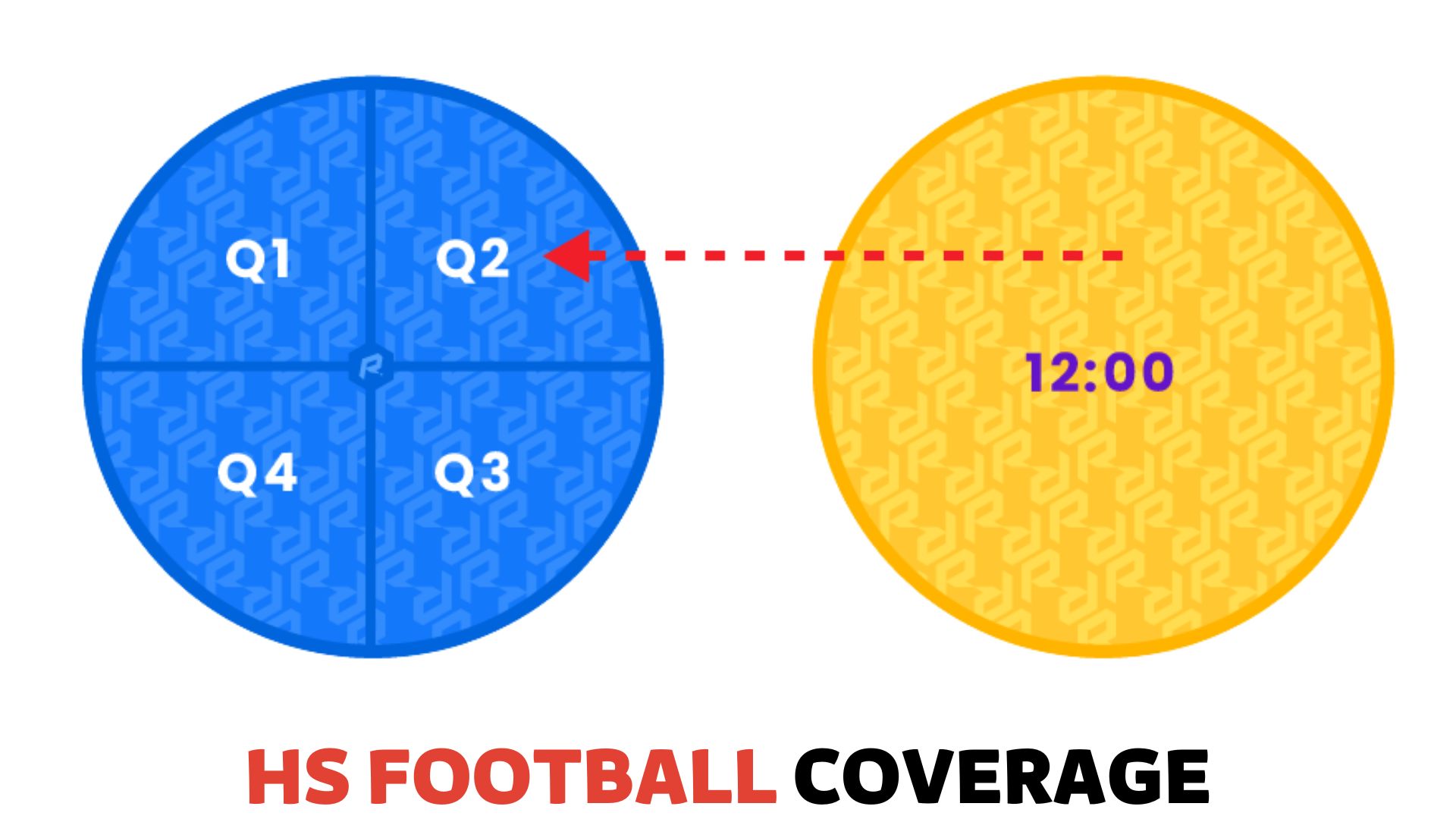
The run rule in high school softball is a mercy rule that ends a game if one team wins by a certain number of runs after a specified number of innings. Introduced to shorten games with lopsided scores, the run rule allows for more efficient use of time and resources for both teams.
It provides a clear outcome when one team holds a significant lead, preventing unnecessary play continuation. This rule ensures a fair and competitive environment, allowing teams to focus on improving their skills and strategies rather than lingering in unbalanced matchups.
Implementing the run rule allows high school softball competitions to be more streamlined and beneficial for all participants.
Understanding the Run Rule in High School Softball
In high school softball, the run rule is a crucial aspect of the game that can significantly impact the outcome of a match. Implemented to maintain fair competition and prevent lopsided victories, the run rule comes into play when one team establishes a considerable lead over their opponents.
It ensures that games do not unnecessarily prolong and allows both teams to quickly move on to the next match. In this article, we will delve into the definition of the run rule in high school softball, the purpose and objectives behind its implementation, and its effects on games and players.
Definition of the Run Rule in High School Softball
The run rule in high school softball is introduced to avoid excessively one-sided games. When a team establishes a lead of a certain number of runs over their opponent within a specific timeframe, the game is concluded, and the winning team is declared.
While the exact requirements can vary between different leagues and states, the most commonly used run rule in high school softball is the “10-run mercy rule.”
Under this rule, if a team leads by ten or more runs after a predetermined number of innings or at any point during the game, the match is terminated, and the leading team is declared the winner.
Purpose and Objectives of Implementing the Run Rule
Implementing the run rule in high school softball serves several important purposes and objectives. Firstly, it aims to prevent unnecessary delays in the game, ensuring that matches do not continue indefinitely when one team establishes an insurmountable lead.
This allows for a more efficient utilization of time and resources, benefiting both teams and the overall schedule of the competition.
Furthermore, the run rule promotes fairness and sportsmanship by preventing teams from exceeding the score excessively. High school softball is a developmental level of the sport, and it is crucial to prioritize the growth and confidence-building of young athletes.
By terminating games with significant score differentials, the run rule helps to maintain a level playing field, encouraging competitive and enjoyable matches for all teams involved.
Impact of the Run Rule on Games and Players

Implementing the run rule in high school softball, directly and indirectly, impacts games and players. When a game is ended due to the run rule, it can evoke mixed emotions among the teams.
The team in the lead may be satisfied with its victory, while the trailing team may feel disappointed or discouraged. However, the rule aims to protect the players’ mental and emotional well-being by avoiding unnecessarily long and demoralizing games.
Additionally, the run rule encourages teams to focus on consistent effort throughout the game, regardless of the score. Both teams know that a significant lead can end prematurely in the game, so there is a constant drive to maintain competitiveness, even in challenging situations.
This mindset promotes resilience and determination, essential qualities for young athletes to develop. Overall, the run rule in high school softball is a vital aspect of the sport that ensures fair competition, efficient game management, and the overall well-being of the players.
It helps create an environment where teams can compete confidently and enjoy the sport while fostering their growth and development as athletes.
How Does the Run Rule Work?
The run rule in high school softball is a regulation that allows a game to end early if one team wins by a certain number of runs after a specified number of innings. This rule ensures fairness and prevents excessive high school softball game scoring gaps.
Explaining the Conditions for the Run Rule to Be Enforced
The run rule in high school softball is designed to prevent blowout games from dragging on and maintain the sport’s fair and competitive nature. This rule comes into effect when there is a significant difference in the teams’ scores. Certain conditions must be met to enforce the run rule.
The most common condition is a difference in runs between the teams after a specific number of innings. In most high school softball leagues, the run rule is typically invoked if one team is ahead by a certain number of runs after three or four innings. The exact number of runs and innings may vary depending on the league rules, but generally, the difference is around 10 runs or more.
Run Difference and Inning Requirements for Invoking the Run Rule
The specific run difference required to invoke the run rule may differ from league to league. However, it is usually a substantial lead deemed insurmountable within the remaining innings of the game. For example, the run rule might come into play if a team leads by 10 runs or more after three innings.
Similarly, the number of innings required to invoke the run rule can also vary. Some leagues may allow it to be enforced after three innings, while others may require four innings to pass before it can be applied.
These requirements are designed to balance competitiveness and game length, ensuring that both teams have a chance to compete while preventing excessively long games.
Consequences and Implications for Both Winning and Losing Teams
The consequences of enforcing the run rule differ for winning and losing teams. For the winning team, invoking the run rule means an automatic victory, regardless of the remaining innings. This saves them from playing the complete game and expedites the outcome, allowing them to conserve energy for future matches.
On the other hand, enforcing the run rule can be disheartening for the losing team. It signifies that the deficit is deemed insurmountable, and they are unlikely to stage a comeback. However, it also allows the losing team to regroup and focus on areas of improvement for future games.
The run rule is important in maintaining balance and fairness in high school softball games. By preventing excessively one-sided contests, both teams can compete on an even playing field while considering the time constraints and energy conservation for all parties involved.
Pros and Cons of the Run Rule
The run rule is a regulation in high school softball that allows a game to be ended before the full seven innings if one team has a sizeable lead over the other.
While this rule aims to promote fair play and maintain game flow, it has advantages and disadvantages. Let’s examine the pros and cons of the run rule in high school softball.
Advantages of the Run Rule in Promoting Fair Play and Maintaining Game Flow
The run rule in high school softball has several advantages that contribute to fair play and ensure that the game progresses smoothly. These advantages include:
- Preventing blowout scores: One of the primary benefits of the run rule is that it prevents blowout scores, where one team dominates the other by a large margin. This ensures no team feels demoralized or discouraged, creating a more positive playing environment for all participants.
- Saving time: Another advantage of the run rule is that it saves time. In games where one team has a significant lead, allowing the game to end early under the run rule avoids dragging out the game unnecessarily. This helps with scheduling and allows teams to move on to their next games efficiently.
- Promoting skill development: By limiting the length of games in which one team is decisively ahead, the run rule allows coaches to focus on skill development rather than enduring a lopsided game. It encourages teams to work on specific aspects of their gameplay, such as batting or fielding techniques, during practice or in the remaining time after a run rule ends the match.
- Maintaining game intensity: The run rule also helps maintain the game’s intensity, as players know the game could end early if the opposing team establishes a significant lead. This keeps players engaged and encourages them to give their best every inning.
Disadvantages and Criticisms of the Run Rule in High School Softball
Although the run rule serves various purposes, it is not without its drawbacks and criticisms. Here are some of the main disadvantages:
- Unequal playing time: One criticism of the run rule is that it can result in unequal playing time for athletes. When a game is ended early due to the run rule, players on the trailing team may find themselves with limited opportunities to showcase their skills or contribute to the game’s outcome.
- Potential loss of experience and learning: Ending games prematurely can prevent players from gaining valuable experience in competitive situations. It limits their ability to learn from challenging game scenarios and adapt strategies to overcome difficult situations.
- Decreased motivation: Some players and coaches argue that the run rule reduces team motivation and resilience. With the possibility of the game ending early, players may feel less inclined to rally and mount a comeback, leading to a decline in overall competitiveness.
- Limits opportunities for comebacks: The run rule denies teams the chance to make comebacks, even if they start to turn the game around after a rough start. This can detract from the excitement and thrill of high school softball, where underdogs often surprise spectators with their ability to bounce back.
Perspectives and Opinions From Players, Coaches, and Spectators
Opinions about the run rule in high school softball vary among players, coaches, and spectators, often depending on their roles and experiences.
Some individuals support the run rule for its ability to maintain fair play and prevent one-sided games from dragging out. In contrast, others criticize it for limiting playing time and potentially diminishing the competitive spirit.
It’s important to consider the diverse perspectives surrounding this rule to make informed decisions about its use in high school softball.
Strategies and Tactics to Navigate the Run Rule
When it comes to high school softball, the run rule is a regulation that can significantly impact the outcome of a game. Teams must be well-versed in strategies and tactics to effectively navigate the run rule, whether to prevent it from being enforced against them or to utilize it to secure victories.
This article will explore some tips, strategies, and coaching techniques that can help teams make the most out of the run rule situation.
Tips for Teams to Prevent the Run Rule From Being Enforced Against Them
Preventing the run rule from being enforced against your team requires a combination of solid defensive play and strategic offensive tactics. Here are some tips to help your team achieve this:
- Build a strong defense: Focus on developing a strong defensive unit that excels in fielding, catching, and throwing accuracy. A solid defense can significantly reduce the number of runs scored by the opposing team.
- Efficient pitching: Ensure your pitchers are well-prepared and can throw accurate pitches. A skilled pitcher can keep the opposing team’s hits to a minimum, decreasing the chances of the run rule being enforced.
- Tactical offensive approach: Develop smart strategies that advance base-runners and efficiently score runs. Your team can stay ahead of the run rule by capitalizing on scoring opportunities and avoiding unnecessary risks.
- Effective base running: Teach your players the importance of smart base running. Emphasize the need to take calculated risks while ensuring they avoid unnecessary outs. This can help keep the score close and prevent the run rule from being triggered.
Strategies for Teams to Effectively Utilize the Run Rule to Secure Victories
The run rule can be a powerful tool in securing victories for your team. By implementing strategic tactics, you can maximize its advantages and turn the game in your favor. Here are some strategies to consider:
- Aggressive offensive play: Once your team has gained a substantial lead, it’s essential to maintain pressure on the opposing team’s defense. Encourage aggressive, offensive play to continue accumulating runs and widen the gap.
- Strategic pitching: Consider using your pitchers strategically after building a significant advantage. Assign them specific roles, such as relieving pitchers or focusing on specific batters, to maintain control of the game and minimize the opposing team’s chances of making a comeback.
- Effective substitutions: Utilize substitutions strategically to maintain the team’s energy and performance levels. Substituting players at the right time can provide fresh momentum and allow your team to dominate.
- Adapting to the situation: Stay vigilant and adapt your game plan based on the score and the opposing team’s performance. Adjust your offensive and defensive strategies accordingly to secure a victory.
Coaching Techniques to Prepare Players for Potential Run Rule Situations
As a coach, preparing your players mentally and physically for potential run-rule situations is crucial. Here are some coaching techniques to help your players handle these situations effectively:
| 1. Psychological preparation: | Help your players develop a strong mindset and mental resilience. Make them understand that even if the run rule is enforced against them, they should remain focused and give their best until the very end. |
| 2. Run rule drills: | Integrate run rule drills into your practice sessions. Simulate scenarios where the team is at risk of a run rule and encourage players to strategize and overcome the challenge. This will build their problem-solving skills and boost their confidence. |
| 3. Communication and motivation: | Effective communication between the coach and players is vital in run rule situations. Provide constant feedback, offer encouragement, and motivate players to stay engaged and give their best effort. |
| 4. Comprehensive game plan: | Create a comprehensive game plan that equips your team to handle the run rule situation efficiently. Identify potential challenges and work on specific strategies to overcome them. |
Implementing these coaching techniques ensures your players are well-prepared and ready to thrive, even in challenging run-rule situations.
The Future of the Run Rule in High School Softball
In high school softball, the run rule is applied when there is a significant difference in the score between two teams. It allows the game to be ended early if one team has a substantial lead over the other.
This rule helps to prevent lopsided games from dragging on and ensures that both teams get a fair chance to compete.
Evolution and Potential Modifications of the Run Rule Over Time
Like any other rule in sports, the run rule in high school softball has evolved to address various factors such as player safety, game duration, and maintaining the sport’s competitiveness.
The initial run rule in high school softball was usually around ten runs after five innings or fifteen runs after three innings, resulting in an automatic victory for the leading team.
However, due to potential modifications over time, this rule is subject to change and adaptation based on the feedback and needs of the players, coaches, and governing bodies.
Alternative Scoring Systems Being Considered in High School Softball
As the future of the run rule in high school softball is being evaluated, there have been discussions about alternative scoring systems that could be considered to maintain the integrity of the game while also addressing concerns regarding lopsided outcomes.
One proposal that has gained traction is implementing a maximum run differential rule, where the game would end if the score difference between the two teams exceeds a certain threshold, regardless of the number of innings played.
This alternative approach would still allow competitive play while preventing excessively one-sided games.
Impact and Implications of Potential Changes on the Game and Players
If changes to the run rule in high school softball are implemented, it would significantly impact the game and the players involved. One potential consequence could be higher competitiveness and closer-scoring contests, as teams would no longer have the luxury of relying on the run rule to secure a quick victory.
This could lead to more strategic plays and heightened excitement throughout the game. Additionally, players may need to adapt their playing styles and approaches to accommodate the modified rules, further enhancing their skills and overall development as athletes.
Considering potential changes to the run rule in high school, softball is crucial. By considering different alternatives and their implications for the game and players, the governing bodies can ensure fair competition, player safety, and an enjoyable experience for everyone involved.
Conclusion
Understanding the run rule in high school softball is crucial for players, coaches, and fans. The run rule ensures that games remain competitive and time-efficient by limiting the number of runs a team can score in an inning.
It allows both teams to showcase their skills while allowing for a possible comeback. Familiarizing oneself with this rule is essential to fully enjoying and appreciating the sport of high school softball.
Remember this knowledge as you watch and support your favorite teams, and let the game unfold with excitement and fair play.















